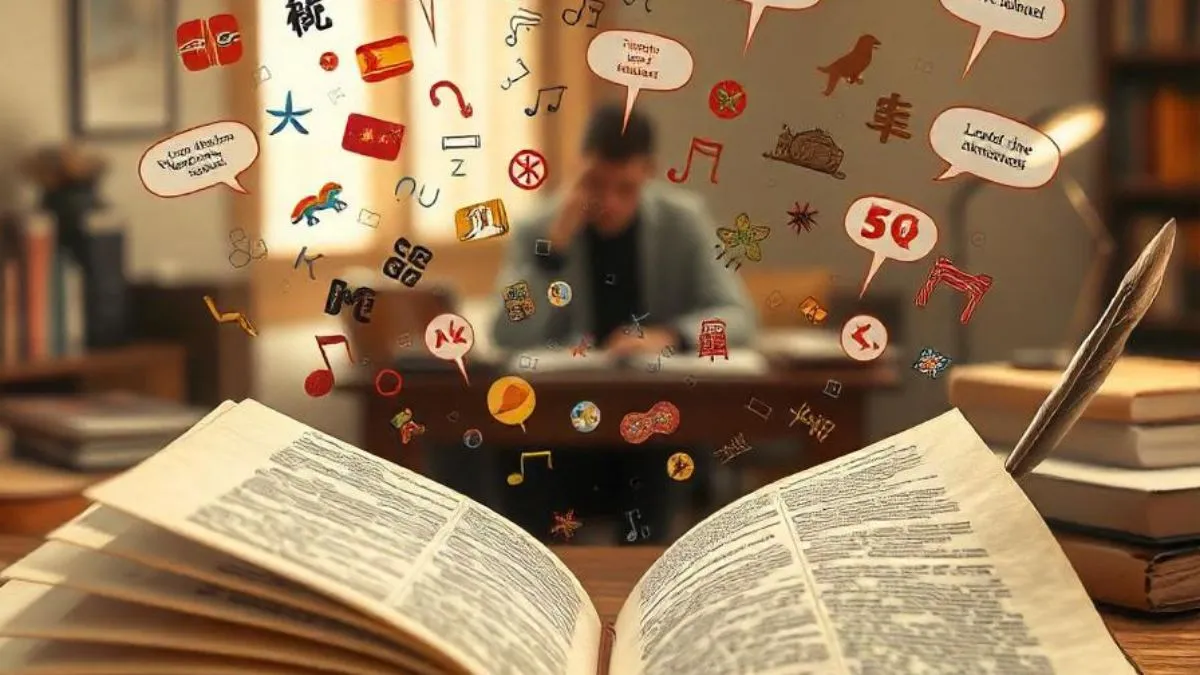Translation is a bridge that connects readers across cultures and languages, making literature accessible to diverse audiences. However, the process is fraught with translation challenges, particularly in capturing the essence of cultural interpretation. Translators face the daunting task of conveying not just words but the emotions, symbolism, and context embedded in the original text.
Understanding Translation Challenges
1. Linguistic Differences
Languages differ in syntax, grammar, and vocabulary, which can complicate the translation process. Translators must grapple with structures that lack direct equivalents in the target language, leading to potential loss of meaning.
2. Idiomatic Expressions
Idioms and proverbs often carry cultural significance that may not exist in the target language. For instance, the phrase “it’s raining cats and dogs” would puzzle readers unfamiliar with its metaphorical meaning.
3. Untranslatable Words
Some words and concepts are so deeply rooted in a specific culture that they have no equivalent in another language. For example, the German word Schadenfreude captures a sentiment that requires a phrase to explain in English.
The Role of Cultural Interpretation
1. Preserving Authorial Intent
Translators must ensure the original intent and tone of the author are maintained. Misinterpretation can lead to an entirely different reading experience, distorting the literary meaning.
2. Navigating Cultural Nuances
Every piece of literature is a product of its cultural context. Translators must be adept at understanding and interpreting these nuances to provide a faithful rendition.
3. Addressing Cultural Differences
Translators often encounter elements that might be unfamiliar or even offensive to the target audience. Balancing fidelity to the source text with cultural sensitivity is a significant challenge.
Key Strategies for Effective Literature Translation

1. Mastering Translator Skills
A skilled translator possesses a deep understanding of both the source and target languages, along with cultural insights. This expertise is crucial for accurately conveying the text’s essence.
2. Employing Translation Techniques
Techniques like transcreation—adapting content while maintaining its original impact—are especially useful for capturing the subtleties of literary works.
3. Consulting Cultural Experts
Engaging cultural experts can help ensure that translations align with the traditions and values of the target audience.
4. Emphasizing Cross-Cultural Communication
Maintaining open dialogue between the translator and the author (when possible) or consulting scholarly sources about the text’s cultural background can improve translation accuracy.
The Impact of Stylistic Choices
1. Recreating Literary Style
Literary works often feature distinctive styles, such as poetic language or regional dialects. Translators must replicate these stylistic choices while ensuring the text remains comprehensible.
2. Balancing Formality and Tone
Translators must decide how to adapt the formality or tone of a text to suit the target audience while retaining the original’s intent.
Cultural Adaptation in Translation
1. The Case for Localization
Localization goes beyond translation by tailoring content to meet the cultural expectations of a specific audience. This approach ensures relatability without compromising the text’s essence.
2. Challenges in Maintaining Authenticity
Adapting cultural elements like festivals, food, or social norms can risk eroding the authenticity of the original text. Striking the right balance is critical.
Examples of Successful and Problematic Translations
1. Successful Translations
- The Alchemist by Paulo Coelho: Its poetic and philosophical essence is retained across numerous translations.
- One Hundred Years of Solitude by Gabriel García Márquez: The translation captures the magical realism that defines the original Spanish text.
2. Problematic Translations
- Certain historical or religious texts have faced criticism for inaccurate or biased translations, leading to misrepresentation of the original ideas.
Technological Advances in Translation
1. The Role of Machine Translation
AI tools like Google Translate have made strides in translating texts but often fall short in preserving cultural nuances and literary meaning.
2. Hybrid Approaches
Combining machine translation with human expertise can streamline the process while ensuring quality.
The Future of Literature Translation
1. Increasing Demand for Global Literature
As readers seek diverse voices, the demand for skilled translators continues to grow.
2. Advancing Translator Education
Programs focusing on cultural interpretation and advanced translation techniques are crucial for developing the next generation of literary translators.
Conclusion
The art of translating literature extends far beyond linguistic conversion—it requires profound cultural sensitivity and an understanding of the author’s intent. While translation challenges and cultural differences present obstacles, skilled translators who embrace innovative techniques can deliver works that resonate across cultures. By prioritizing both cultural interpretation and literary meaning, we can continue to bridge the gap between languages and enrich global understanding through literature.